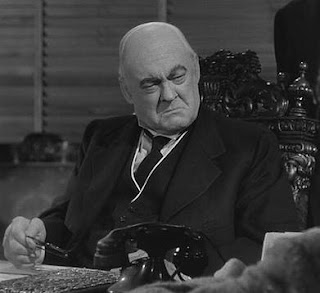Carlyle Group said Wednesday, Jan. 31, it reached a definitive agreement to acquire Philosophy Inc., a fast-growing brand of lotions and personal-care products, for an undisclosed sum.
The Phoenix-based company generates about $50 million in Ebitda and had been expected to sell for about $450 milion, according to investment banking sources.
— TheDeal.com
New York, February 1, 2007: The deal announced yesterday between private equity behemoth The Carlyle Group and Philosophy Inc. has kicked off a whirlwind of dealmaking and jockeying for position among leading private equity players in the fast-moving and lucrative philosophy sector. Mega-firms such as KKR, Apollo Management, and Texas Pacific Group are each rumored to be hiring dozens of industry experts and practitioners to build sector teams focused on finding investments in the industry.
“I haven’t seen anything like it since the panic to get into infrastructure last year,” claimed one senior private equity professional. “It’s insane.” Leading practitioners like Jerry Fodor of Rutgers University and Stanley Fish of Florida International University in Miami are rumored to be negotiating with competing financial sponsors to join as Philosopher-Executives-in-Residence for multi-year pay packages in excess of eight figures. Neither professor returned phone calls before press time, and officials at both universities refused comment.
The hiring frenzy has extended to less well-known industry participants also, as PE firms look to snap up junior resources with scarce industry knowledge and experience. Marvin Applestein, a third-year PhD candidate in philosophy at Harvard University, reported that he had heard of Assistant Professors specializing in esoteric fields like quantum epistemology being offered million dollar signing bonuses. “Even post-docs are getting in on the action. I’ve heard the Ferrari dealership in Cambridge is completely sold out,” he said.
The fever is apparently reaching across the pond to Europe as well. “I can’t talk now,” the head of Cambridge University Press’s Philosophy Section, Graham Smythe-Withers, commented earlier today, “Those bastards at Permira just swooped in and nicked my entire editorial staff, including the PAs!” Reached at a Heidegger colloquium at the University of Köln late yesterday, Permira Managing Partner Damon Buffini declined to comment. “It’s getting so bad, my friend Rudy at the Sorbonne tells me market demand for Sartre scholars might even resuscitate,” claimed Mr. Applestein.
“It’s no surprise that financial sponsors are finally taking a serious look at this industry,” commented Ralph Thomas, Senior Equity Research Analyst for Philosophy and Argumentation at Lehman Brothers in New York. “We have been bullish on this space for some time now.” Mr. Thomas notes that revenues and earnings have been climbing for most industry participants well in excess of 15% per year for the past five years, while earnings multiples for listed philosophy companies have failed to keep pace with the overall market. “We like a number of players, including large-cap companies like Kant AG and Descartes SA and mid-market participants Wittgenstein & Co. and Hume plc.” (Lehman Brothers does not provide investment banking services to any of these companies, and Mr. Thomas does not own shares in any of them, although he did take a course in Hegel once.)
“You can see why we’re all excited,” commented a senior partner at an un-named PE firm which is building its sector capability and looking for deals. “Dave [Rubenstein of The Carlyle Group] really snagged a sweet deal with Philosophy Inc. at nine times [EBITDA, or earnings before interest, taxes, disputation, and argumentation]. We would have been all over that deal, if we had had the resources two months ago.” The un-named partner noted that leveraged buyouts of philosophy companies, which primarily produce intangible assets, would have been extremely hard to finance just two years ago, due to traditional lenders’ unwillingness to lend against post-deal balance sheets consisting primarily of goodwill, free will, and radical skepticism. “Nowadays, I’ve got Stevie [Cohen, of hedge fund SAC Capital] on the phone every day, begging to lend me money for any ontology or metaphysics assets we can find.” Final details of Carlyle’s purchase of Philosophy Inc. cannot be confirmed, but preliminary reports indicate that selling advisor Houlihan Lokey offered potential purchasers stapled financing at seven times EBITDA.
Investment banks have seen the light, as well. Leading players such as Goldman Sachs, UBS, and Credit Suisse are currently in the process of building dedicated industry coverage teams focused on the philosophy sector in order to satisfy the booming demand for buy- and sell-side advice from corporations and private equity firms. “We are in the process of reallocating coverage bankers from the Healthcare and Consumer sectors into our Global Philosophy Group,” claimed Ken Moelis, President of UBS Investment Bank. “Given our strong lending capabilities and deep industry knowledge of Continental and Analytical Philosophy, we expect to become the leading advisor to corporations and financial sponsors in the space within the next 18 months.”
Some of his competitors beg to differ. “I sat in the same Michael Dummett seminar as Kenny when we were at Wharton, and let me tell you, Kenny may know his DCF [discounted cash flow], but he doesn’t have a clue about referential empiricism,” asserts Lloyd Blankfein, Chairman and CEO of Goldman Sachs.
For now, some market watchers say the safest bet may be to invest in the companies that sell picks and shovels to the miners of this new Gold Rush. Stacey Williams, Assistant Store Manager at the Barnes & Noble bookstore on Wall Street, reports that the store’s entire stock of Kierkegaard has been sold out for weeks. “Last week, a Columbia Business School professor brought his Advanced Accounting class of MBAs into the store just to show them where the Western Philosophy section was. It was kind of sweet. Most of those students hadn’t seen a humanities book since freshman year in college.”
NOTE, February 25, 2012: This crack piece of financial reportage was originally published on this site February 1, 2007. It has been slightly revised and rereleased for historical interest. Carlyle subsequently sold Philosophy Inc. for a profit, Lehman Brothers went out of business, and Ken Moelis left UBS to found an eponymous advisory firm. To the best of this reporter’s knowledge, David Rubenstein, Damon Buffini, and Lloyd Blankfein remain gainfully employed at their respective establishments. Subsequent to the feverish activity detailed in the original piece, the private market for philosophy assets collapsed back into its habitual desuetude, primarily due to European and American investors’ inability to agree on fundamental value. After failing to land a position at a private equity shop, Marvin Applestein departed the field of philosophy to become the 25th employee of an obscure start-up named Facebook, founded by another Harvard dropout. Mr. Applestein is currently looking forward to the imminent purchase of six Ferraris, each in a different color. Plus ça change...
© 2007, 2012 The Epicurean Dealmaker. All rights reserved.






